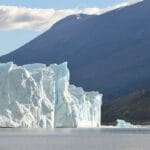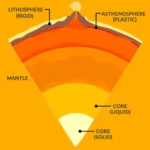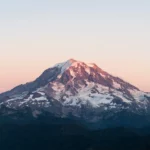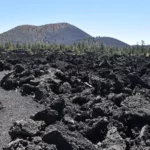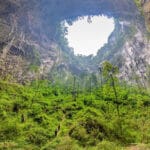Deconstructing Definitions: Mineral vs. Rock
The question, “Is ice a rock?”, often sparks curiosity and debate. The answer lies in understanding the fundamental building blocks of our planet: minerals and rocks. Minerals are naturally occurring, inorganic solids with a defined chemical composition and a highly ordered atomic arrangement, forming a crystalline structure. Picture the intricate, six-sided symmetry of a snowflake – a testament to the crystalline nature of ice. Rocks, however, are consolidated aggregates of one or more minerals. Therefore, the relationship between ice, minerals, and rocks hinges on its formation and structure. Learn more about how landforms like glaciers are created by visiting this informative site on island formation.
The Transformative Journey: From Snowflake to Glacier
The journey of ice from delicate snowflake to massive glacier showcases a remarkable geological process: metamorphism. Imagine a snowflake falling onto a growing snowpack. As layers accumulate, the pressure on the lower layers increases, compacting the snow and expelling air. This compacted snow, called firn, is denser and more granular. Over time, under immense pressure and further compaction, the firn undergoes recrystallization. The individual ice crystals within the firn grow larger and interlock, forming a solid, interconnected mass: glacial ice. This transformation, driven by pressure and time, mirrors the metamorphism of other rock types, like the conversion of shale to slate under intense heat and pressure. Glacial ice, a vast, consolidated body of naturally formed ice crystals, thus qualifies as a metamorphic rock. But this is just one part of the icy story.
Man-Made vs. Natural: The Crucial Distinction
While glacial ice earns its rock status, the ice cubes chilling your drink tell a different tale. Formed through artificial freezing, they lack the natural geological processes crucial for mineral and rock classification. This distinction highlights a key principle: the origin of a substance dictates its categorization. Man-made ice, despite sharing the same chemical composition as naturally occurring ice (H2O), doesn’t meet the criteria for a mineral or a rock. The formation process is paramount.
Beyond Glaciers: Exploring the Spectrum of Ice
The world of ice extends far beyond glaciers, encompassing diverse forms like sea ice, lake ice, and even the ephemeral frost on your windowpane. Each type forms under unique environmental conditions, influenced by factors like temperature, pressure, and the presence of impurities. These variations in formation processes result in a spectrum of ice types with distinct physical properties. For instance, sea ice, formed by the freezing of seawater, contains higher salt concentrations than glacial ice, affecting its density and melting point. Understanding these diverse formations is essential for comprehending ice’s multifaceted roles in shaping landscapes, influencing ocean currents, and regulating Earth’s climate.
The Great Ice Debate: Unsettled Questions and Ongoing Research
Even within the scientific community, the classification of ice continues to generate discussion and research. Some scientists argue that snow, with its layered structure resembling sedimentary rock precursors, could be considered a proto-rock. Others maintain that only glacial ice, formed through metamorphism, truly qualifies as a rock. This ongoing debate highlights the complexity of categorizing natural substances and the ever-evolving nature of scientific understanding. Furthermore, research delves into the intricate crystalline structures of different ice types, exploring their impact on ice’s physical properties and behavior under varying environmental conditions. From its role in climate change to its potential as a habitat for microorganisms, the world of ice continues to captivate and challenge scientific exploration.
- Jesus Bible: Discover Jesus’s Story Throughout Scripture - April 27, 2025
- Don Luis: Unraveling the 16th-Century Virginia Mystery - April 27, 2025
- Captain J’s Kauai Tours: Unforgettable Na Pali Coast Adventures - April 27, 2025

